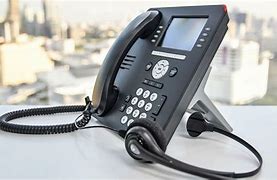

Choosing the right virtual data room (VDR) is crucial for any M&A transaction, fundraising round, or due diligence process. A robust VDR ensures seamless collaboration, secure data sharing, and ultimately, a successful deal. However, with so many VDR providers on the market, selecting the right one can feel overwhelming.
This checklist provides an essential guide to navigating the VDR landscape and choosing the best solution for your specific needs:
1. Security and Compliance: Your top priority should be the security of your sensitive data. Ensure the VDR provider offers advanced security features like granular permissions, two-factor authentication, data encryption at rest & in transit, and robust audit trails. Compliance with industry regulations, such as HIPAA, GDPR, and SOC 2, is vital to safeguard your data and meet legal requirements. Ask about the provider’s certifications and security practices to validate their commitment to data protection.
2. Ease of Use & Collaboration Features: The VDR platform should be user-friendly for both internal teams and external parties involved in the deal. Look for features that facilitate smooth collaboration, such as drag-and-drop functionality, built-in chat & Q&A capabilities, and comprehensive document management tools.
3. Data Control and Management: Having complete control over your data is critical. Select a VDR that allows you to set clear access permissions, restrict downloads, control user access, and track activity. Features like bulk upload & download options, advanced search & filtering, and customizable permissions will streamline your workflow and provide you with the flexibility you need to manage your sensitive data.
4. Integration & Customization: Your chosen VDR should seamlessly integrate with your existing tools & systems for optimal efficiency. Look for integration options with file sharing platforms, CRM software, and other enterprise applications to ensure smooth data flow and minimize potential for error.
The Essential Checklist for Choosing a Virtual Data Room
In today’s digital age, businesses are constantly seeking ways to streamline their operations and enhance security. A virtual data room (VDR) has emerged as an indispensable tool for facilitating seamless collaboration and secure data sharing, particularly during due diligence processes.
What is a Virtual Data Room?
A virtual data room is a secure online platform designed to store, manage, and share confidential documents and data. It acts as a centralized repository for sensitive information, offering robust security measures and thorough access control functionalities. VDRs are widely used in various transactions, including mergers and acquisitions (M&A), fundraising, and intellectual property licensing.
Why is a Virtual Data Room Essential for Due Diligence?
Due diligence, a crucial process in any transaction, requires extensive data sharing and collaboration between parties. A VDR plays a pivotal function by providing a secure and efficient platform for:
- Streamlined Collaboration: VDRs enable multiple stakeholders, including investors, lawyers, and advisors, to access and collaborate on documents securely.
- Enhanced Security: With robust security attributes like encryption, multi-factor authentication, and access control, VDRs safeguard sensitive information from unauthorized access.
- boostd Efficiency: VDRs automate document management processes, allowing for faster and more efficient due diligence.
Choosing the Right Virtual Data Room: A thorough Checklist
selecting the right VDR can significantly impact the achievement of your due diligence process. Here’s a checklist to guide you through the decision-making process:
attributes and functionality:
- Secure File Sharing and Access Control: The VDR should offer secure file sharing capabilities with granular access control mechanisms, allowing you to define specific user permissions and restrict access to sensitive data.
- Document Management and Organization: Look for a platform that enables efficient document organization with attributes like folder structures, tagging, and search functionalities to easily locate and manage documents.
- Version Control and Audit Trails: VDRs should offer version control, allowing you to track changes made to documents and maintain historical records. Audit trails are critical for ensuring accountability and transparency.
- Q&A and Collaboration Tools: Consider attributes that facilitate communication and collaboration, including secure messaging, comment threads, and Q&A sections.
- Reporting and Analytics: VDRs should offer reporting and analytics dashboards, enabling you to track user activity, document access patterns, and other pertinent metrics.
Security and Compliance:
- Data Encryption and Security Measures: The VDR should employ robust data encryption techniques to protect sensitive information both at rest and in transit.
- Compliance with Industry Standards and Regulations: Ensure the VDR complies with pertinent industry standards and regulations, such as GDPR, HIPAA, and SOC 2, to meet data privacy and security requirements.
- Access Control and User Management: The VDR should offer granular access control mechanisms to manage user permissions and restrict access based on functions and responsibilities.
Pricing and Support:
- Pricing Models and Transparency: Evaluate varied pricing models, including per-user, per-project, and flat-fee options. Transparency in pricing is crucial to avoid unexpected costs.
- Customer Support and Training: Look for a VDR offerr that offers responsive customer support and thorough training resources to ensure smooth implementation and ongoing support.
User Experience and Integration:
- Intuitive Interface and Ease of Use: A user-friendly interface is critical for efficient document management and collaboration. The platform should be intuitive and easy to navigate.
- Integration with Existing Systems and Workflows: The VDR should seamlessly integrate with your existing systems and workflows, including email, document management platforms, and other business applications.
Finding the optimal Virtual Data Room offerr
- studying and Comparing offerrs: Explore varied VDR offerrs, comparing attributes, pricing, and customer support options.
- Requesting Demo and complimentary Trials: Request demos and complimentary trials from shortlisted offerrs to get a hands-on experience with the platform.
- Reading Reviews and Testimonials: Read reviews and testimonials from other users to gain insights into the offerr’s reputation and service quality.
Implementing and Using Your Virtual Data Room
- Setting Up and Configuring Your Data Room: Once you’ve chosen a VDR, set up your data room and configure it based on your specific requirements.
- Training and Onboarding Your Team: Train your team on using the VDR platform to ensure efficient and effective document management.
- Using Your Virtual Data Room for Due Diligence: Utilize the VDR to facilitate data sharing, communication, and collaboration throughout the due diligence process.
Conclusion: Choosing the Right Virtual Data Room for Your Needs
Choosing the right virtual data room is critical for a achievementful due diligence process. By considering the checklist outlined above, you can determine a offerr that aligns with your specific requirements and enhances security, efficiency, and collaboration. Ultimately, a well-chosen VDR will streamline your due diligence process, ensuring a smoother and more efficient transaction.






